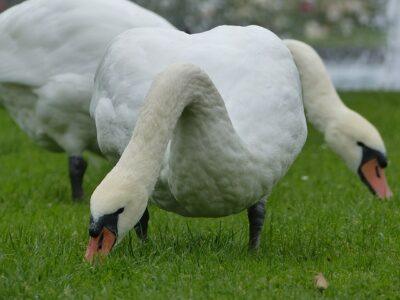Raising ducks and geese can be rewarding — in many ways. They’re social animals that play out a backyard soap opera on a daily basis. Many species of ducks produce just as many eggs as your average chicken. Duck eggs are much larger and richer than chicken eggs.
Ducks also generally excellent, devoted mothers. If you’re not careful a single duck can raise two clutches of 12-16 babies in a single year. That leaves you with a common duck owner problem: overpopulation. An overpopulation of ducks can be quite the blessing if you’re prepared to harvest meat from your home duck flock. Which means, you also have the added benefit of harvesting insulating feathers for homemade down pillows, blankets and jackets.
Plucking.
The trickiest part about harvesting water birds [2] is the plucking. When plucking chickens, most people scald the birds in 145-degree water to cause the base of the feathers to loosen. This allows for them to be easily hand plucked without much effort. They can also be mechanically plucked in a home use drum plucker in about 30 seconds.
Plucking ducks or geese can be a bit more complicated. Their feathers are water-resistant, and they’ve worked hard throughout their life to preen them into an insulated waterproof barrier. Drop them into a scalding bucket, and the water won’t reach the skin to loosen the feathers. Some people recommend dousing them in a mild dish detergent to break up their natural water-proofing oils so that the water can penetrate. However, in reality that just creates a soapy mess and doesn’t make the feathers any easier to pluck.
The fact that wetting ducks through scalding doesn’t make plucking them any easier means that hand-dry plucking is both easier and cleaner, which is good news for pillow fans. The feathers stay dry and clean with the dry plucking process, making them easy to store until you have enough to make your own down crafts.
All natural way to keep your flock insect free [3]
Preparing to Pluck
When it comes to harvesting down feathers from your birds, make sure you provide them fresh clean water to bath in before harvest. The birds love preening and cleaning themselves, and will do all the cleaning work for you if you give them the right tools. Supply them fresh clean water in a small kids pool or large rubber feed tub on a clean surface. Give the birds a short break period (10-20 minutes) in a dry clean area to dry off before harvesting. Damp feathers can mold in storage.
If during the harvest process the feathers become soiled by just about anything (blood, excrement, etc.), simply wipe the bird down with a damp cloth until the feathers are clean and then make sure to allow them to dry thoroughly before plucking and storing the feathers.
Selecting Feathers To Harvest
Roughly 20 percent of the feathers on a duck or goose are considered “down,” and they’re easiest to harvest from the underside of the bird, on the stomach, breast, thighs and upper legs. Larger, tougher wing feathers are not appropriate for use. For home use, there’s a big gray area as to how big a feather you can use and still keep the pillow comfortable. Some of the feathers on the upper back between the wings can help fill out a pillow and keep it fluffy, but may not have the insulating power of down for a comforter or jacket.
‘Miracle Oil Maker’ Lets You Make Fresh Nut Oils Within Minutes!
Commercially, the “100 percent down” label is reserved for items containing only the finest 20 percent of the bird down feathers. Other items labeled just “down” may contain other larger feathers as well, and are much less expensive to purchase. You’d be hard-pressed to notice the difference in a pillow. Keep in mind that feathers insulate less well than down.
How Much Down Can You Harvest?
While being very selective and using only the finest of down (20 percent of the bird), it takes about 12 Wild Canadian Geese to make a single standard-sized pillow. Domestic geese can be up to two to three times as large as their wild cousins. Therefore, it only takes 6-8 domestic geese to make a 100 percent down pillow. Using some slightly larger, but still soft feathers from the back and thighs of the birds, a single pillow can be made from as few as 3-4 domestic geese.
Likewise, it takes 40-55 geese to make a 100 percent down king-sized comforter. It would take a bit over half that number of domestic birds to make a king-sized comforter.
Goose down is more resilient and durable than duck down, and has better insulating qualities. High-quality duck down can still make an excellent pillow. In many cases high-quality duck down is superior to low-quality goose down. Be choosy with your duck down and you’ll do just as well.
Ducks vary greatly in size, but they’re generally about half the size of a wild Canadian goose. Plan accordingly, and expect to both be very choosy with your duck feathers and use the feathers of a lot of birds to accomplish your task.
What advice would you add on making a down pillow or down comforter? Share your tips in the section below:

